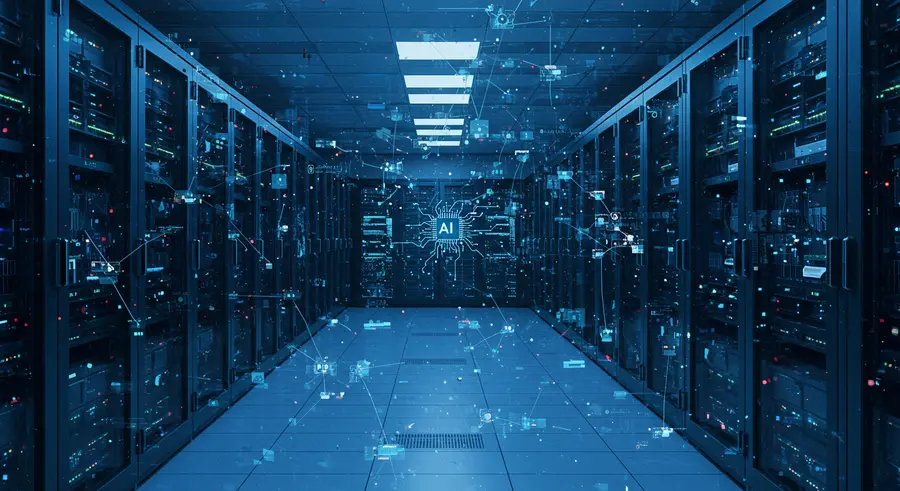Appearance

Welcome, data enthusiasts and tech innovators! 👋 Today, we're diving deep into the electrifying fusion of Artificial Intelligence (AI) and Data Engineering. The landscape of data is evolving at an unprecedented pace, and AI is not just a trend; it's a transformative force reshaping how we collect, process, and derive insights from data. Get ready to explore the exciting trends that are defining the future of data engineering!
The Shifting Paradigm: Why AI in Data Engineering? 🚀
For years, data engineering has been the backbone of data-driven organizations, focused on building robust ETL (Extract, Transform, Load) pipelines and managing data warehouses. However, with the explosion of data volume, velocity, and variety, traditional methods are facing new challenges. This is where AI steps in, offering capabilities to automate, optimize, and intelligentize every stage of the data lifecycle.
AI's integration brings several key advantages:
- Automation: Automating repetitive tasks like data cleansing, schema inference, and even pipeline generation.
- Optimization: Enhancing performance of data pipelines, optimizing resource utilization in cloud data warehouses.
- Intelligence: Providing proactive insights into data quality, anomalies, and potential issues before they impact analytics.
- Scalability: Handling vast and complex datasets with greater efficiency than manual approaches.
Key Trends Shaping the Future 📈
Let's explore some of the most impactful trends driven by AI in modern data engineering:
1. Zero-ETL and ELT Approaches with AI Assistance 🔄
The traditional ETL process (Extract, Transform, Load) is giving way to ELT (Extract, Load, Transform), where data is loaded directly into the data warehouse or data lake, and transformations happen afterward. AI further streamlines this by:
- Automated Schema Inference: AI can intelligently infer schemas from raw, unstructured, or semi-structured data, reducing manual effort.
- Smart Data Cleansing: Machine learning models can identify and correct data quality issues, handle missing values, and standardize formats automatically.
- Optimized Data Loading: AI can predict optimal loading times and strategies based on data patterns and system load, minimizing latency.
This shift simplifies data pipelines and makes data immediately available for analysis.
2. Data Lakehouses and Unified Data Platforms 🌊🏠
The convergence of data lakes (for raw, unstructured data) and data warehouses (for structured, processed data) into "data lakehouses" is a major trend. AI plays a crucial role here by:
- Intelligent Data Cataloging: AI-powered tools automatically catalog data, classify it, and tag it with rich metadata, making it easily discoverable.
- Automated Data Tiering: AI can optimize storage costs by automatically moving data between hot, warm, and cold storage tiers based on access patterns.
- Enhanced Query Optimization: AI can analyze query patterns and data distribution to suggest optimal indexing strategies and query plans, accelerating analytics.
This provides a unified platform for all data types, enabling both traditional BI and advanced analytics, including machine learning workloads. For a deeper dive into foundational concepts, check out our article on Modern Data Warehousing Concepts.
3. Real-time Data Processing with AI-driven Insights ⚡
The demand for real-time insights is growing. AI is empowering real-time data engineering by:
- Stream Anomaly Detection: AI algorithms can monitor data streams in real-time to detect anomalies, fraud, or operational issues as they occur.
- Predictive Analytics on Streams: Machine learning models can make real-time predictions based on incoming data, enabling immediate actions (e.g., personalized recommendations, dynamic pricing).
- Automated Scaling for Streaming Workloads: AI can dynamically adjust resources for streaming applications based on data volume fluctuations, ensuring continuous processing without over-provisioning.
This enables businesses to react instantly to events and opportunities.
4. DataOps and MLOps Integration 🤖
DataOps (DevOps for Data) and MLOps (DevOps for Machine Learning) are crucial for agile and reliable data and AI initiatives. AI contributes by:
- Automated Testing and Validation: AI can generate test cases, validate data transformations, and even identify potential data drift in production.
- Proactive Monitoring and Alerting: AI-powered monitoring tools can predict pipeline failures or data quality degradation before they impact downstream systems.
- Intelligent Resource Allocation: AI can optimize computational resource allocation for data processing and model training, leading to cost savings and faster cycles.
These methodologies ensure the smooth and continuous delivery of high-quality data and machine learning models.
5. Data Governance and Security with AI Assistance 🔒
As data becomes more critical, so does its governance and security. AI enhances these aspects by:
- Automated Data Masking and Anonymization: AI can identify sensitive data and automatically apply masking or anonymization techniques to comply with privacy regulations.
- Intelligent Access Control: AI can analyze user behavior and access patterns to detect suspicious activities and enforce dynamic access policies.
- Compliance Monitoring: AI-powered tools can continuously monitor data usage and storage to ensure adherence to regulatory requirements like GDPR, CCPA, etc.
This ensures data is used responsibly and securely, building trust and maintaining compliance.
The Road Ahead: Challenges and Opportunities ✨
While the integration of AI in data engineering offers immense potential, it's not without challenges. Ensuring data quality for AI models, managing complex AI model lifecycles, and addressing ethical considerations are paramount. However, the opportunities for innovation, efficiency, and deeper insights are far greater.
As data engineers, embracing AI tools and methodologies will be crucial for building the next generation of intelligent, scalable, and resilient data platforms. The future is bright, data-driven, and undeniably intelligent!
What are your thoughts on AI's impact on data engineering? Share your insights below! 👇